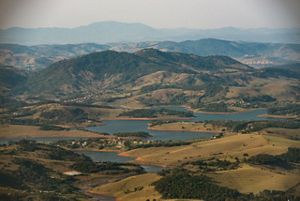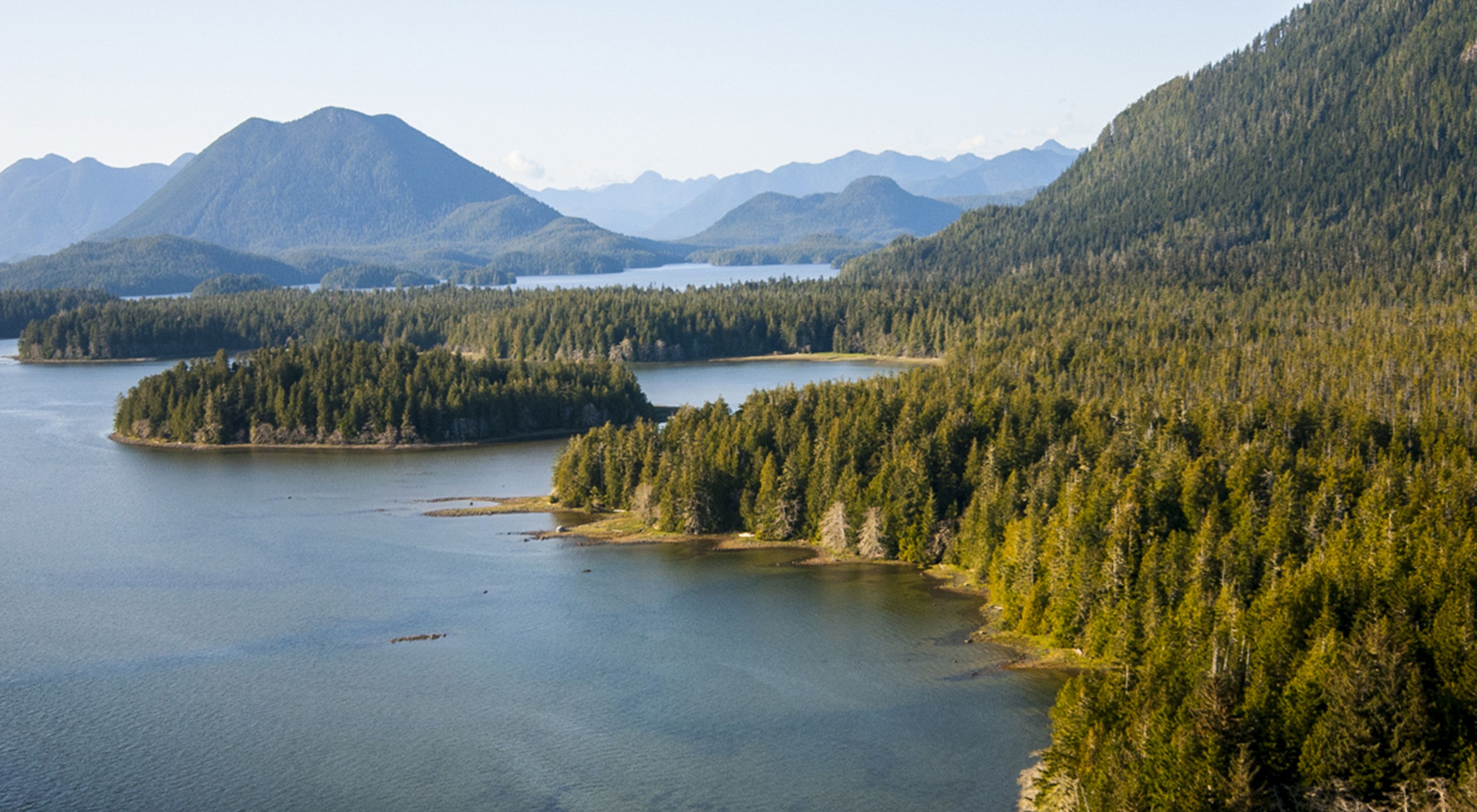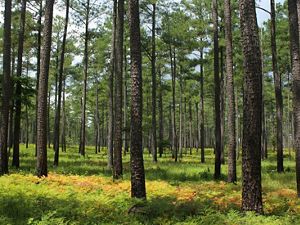The Nature Conservancy (TNC) and Procter & Gamble (P&G) have worked together for almost 50 years to conserve some of the most environmentally critical regions in the world. This collaboration not only propels TNC on the path to our 2030 goals, it also helps progress P&G’s sustainability objectives, which include helping to protect and restore landscapes near P&G's supply chains and advancing natural climate solutions.
Recognizing that this decade represents a crucial window for collective action to prevent climate change from worsening and halting and reversing nature loss, TNC and P&G have identified multiple projects that will deliver lasting impacts, including:
Scaling Restoration in Brazil's Atlantic Forest
The Atlantic Forest in Brazil’s Mantiqueira region is home to plentiful sources that provide water and energy; however, 80% of native vegetation has been lost due to development and deforestation. The Nature Conservancy in Brazil has committed to creating the conditions necessary to restore 1.5 million hectares of unproductive land to forest. With support from P&G, TNC has focused on three areas of engagement necessary to successfully scale up restoration:
- Local Policy Implementation and Local Governance Establishment
One of the cornerstones of TNC’s efforts is supporting local governance and public policies at the municipal and state levels. The active participation of these government entities is crucial to enable forest restoration, conservation initiatives and biodiversity protection. TNC has worked with municipal governments and landowners throughout Brazil on a number of initiatives, including implementing public policies and securing resources for restoration, identifying land in the region that could be restored, raising awareness of fire management and creating a baseline to monitor biodiversity in high-altitude areas. - Strengthening the Forest Restoration Supply Chain
The restoration supply chain encompasses the inputs and services needed to enable restoration, from seeds and tools to maintenance and monitoring. Under a partnership with the Viçosa University, TNC has defined the necessary efforts to increase the capacity of two municipal nurseries that create forest seedlings. We expect one of these nurseries will produce 75,000 seedlings, a portion of which will be directed to restoration initiatives supported by TNC, thus reducing restoration costs. Support to another nursery will enable the production of 20,000 seedlings that will be directed to neighboring pastures within rural settlements. Residents from these settlements are also working as seed collectors, so we expect that the availability of seeds and seedlings in the region will continue to support other restoration initiatives for many years. - Leveraging Resources for Restoration
To ensure that restoration efforts remain cost-effective, TNC collaborates with others to identify, create or expand financial strategies and funding sources that provide economic incentives to landowners whose forests help protect water supplies and sequester carbon. We have worked with the state of São Paulo, the Biota Institute and the São Paulo Research Foundation to support the design of a private climate fund—FINACLIMA-SP—aimed at developing blended finance arrangements and issuing biodiversity and restoration certificates to attract investors.
TNC also helps map out potential sites for restoration initiatives and facilitates in mobilizing landowners and other local groups to join the effort. For example, in Minas Gerais and Rio de Janeiro, TNC is working with the state’s water and sanitation utilities to assist in the restoration of 2,000 hectares and 10,000 hectares, respectively.
Conserving Nature Around the Globe





The Mantiqueria Brazi: The Mantiqueria range of Brazil's Atlantic Forest. TNC's Tackle Climate Change Program. © Robert Clark

Atlantic Forest: The canopy of a 50 year old forest in the Guaraquecaba Carbon Projects, east of Curitiba, state of Parana, Brazil. This project is supported by the Nature Conservancy. © Scott Warren

Kermode Bear: A Kermode bear or “spirit bear” on Gribbell Island in the Great Bear Rainforest of Canada. © Jon McCormack

River Sampling: Scientist Kate Snaddon assesses the biodiversity impacts of the Greater Cape Town Water Fund's invasive plant removal efforts in the Theewaterskloof catchment area. © Jeremy Shelton
New Approaches to Forest Management in British Columbia
In Canada, TNC's Canadian affiliate, Nature United, brings together diverse partners—including First Nations, provincial and federal governments and industries—to build solutions that integrate conservation and sustainable economic development. With its rich and varied landscape encompassing the widest range of ecosystems and more species than any other province, British Columbia (BC) offers a significant opportunity for advancing new forestry practices that integrate ecosystem health, conservation and community well-being.
Indigenous Nations in BC are leading efforts to conserve old-growth forests, advance forest-based natural climate solutions (NCS) and assert their rights and governance. P&G has provided support for this work, allowing TNC to offer funding and technical support for a portfolio of Indigenous-led conservation, stewardship and restoration projects. These projects in Clayoquot Sound and the southern Great Bear Rainforest are advancing new conservation and forestry tenures on First Nations’ territories and increasing engagement with the BC government to ensure program and policy alignment across the province.
Elevating Consumer Awareness
- Between 2021 and 2022, P&G supported The Nature Conservancy’s Plant a Billion Trees Campaign with reforestation initiatives in Latin America. In the Mexican state of Chiapas, P&G’s Vicks brand celebrated 100 years in Mexico by planting 100,000 trees in a 60-hectare area of degraded land that was once a biodiversity-rich tropical forest within the Cañón del Sumidero National Park. In Colombia and Guatemala, nearly 10,000 trees were planted in the municipalities of Puerto Lopez, Meta and Cantel, Quetzaltenango, respectively. This effort helped TNC advance the Plant a Billion Trees goals to protect and restore forests, improve water quality for millions of people and mitigate the effects of climate change.
- P&G's hair care brand Herbal Essences launched a multi-year initiative in celebration of Earth month during 2021 and 2022. The Renew the Forest campaign invited customers in select retailers around the United States to join in. For every two bottles of select shampoo or conditioner purchased during the promotion period at participating retailers, P&G helped plant a tree through TNC’s Plant a Billion Trees program. Additionally, P&G contributed benches made by TerraCycle from recycled hair care packaging, which were donated and installed at TNC preserves in Ohio and California.
- P&G supported the Greater Cape Town Water Fund (GCTWF), an initiative that launched in 2018 aiming to raise awareness and fund vital research and projects for long-term watershed protection and restoration. By the end of 2023, GCTWF teams had cleared more than 46,000 hectares of invasive trees, recovering about 15.2 billion liters of water per year back into the water supply while creating hundreds of jobs for women in underserved communities.



